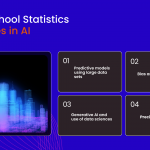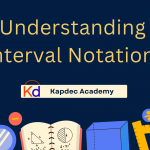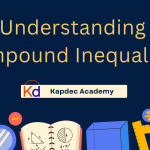Introduction:
Most people mistakenly take data analysis and data interpretation to be the same. Not understanding the inherent fundamental difference between the two could lead to some of the biggest failures in data-driven decision-making [1].
Organizations invest heavily in collecting information, building dashboards, and hiring analysts, yet many struggle to make decisions that actually improve outcomes. Why? Because data analysis and data interpretation serve two very different purposes—and confusing them can change everything.
To understand the difference between the two, let us take a look at the following examples:
- A streaming company noticed users weren’t finishing movies after starting on the TV, and just based on that analysis, the company nearly canceled several film projects. However, a further investigation by another person, who was strong in data interpretation, revealed the truth: users were finishing films later on their mobile devices.
The real insight wasn’t the failure of the streaming services, it was infact the preference of users to watch on their mobile. The company optimized mobile viewing, and engagement soared.
- A fitness app saw a sudden drop in logins and assumed motivation was declining. Interpretation showed something much simpler: summer travel meant users were active offline. Instead of pushing marketing, the team added offline tracking, and retention improved.
The real insight wasn’t the app failure, it was about the “summer Travel and user’s needs”.
- A school district saw falling test scores and blamed student effort. But once teachers added context, leaders realized the curriculum had changed without proper training. The solution wasn’t tougher policies—it was better support.
The real insight wasn’t the lack of interest – it was the lack of training..
In every case, the analysis reported what was happening.
But the interpretation explained why it was happening—and what to do next.
This is the heart of the difference:-
Analysis discovers patterns; interpretation turns patterns into decisions.
Analysis builds the foundation; interpretation gives it purpose.
In the sections ahead, you’ll explore why this distinction matters, where most people get it wrong, and how you can start developing interpretation skills that set you apart—now and in the future.
The Definition of Data Analysis & Data Interpretation
Data analysis is the technical side of working with information. It involves inspecting, organizing, and modeling data using statistical or logical methods. The goal is to break down complex information into something more understandable—tables, charts, trends, or patterns.
Data interpretation takes the next step. It’s the human side—the part where meaning is created. Interpretation turns numbers into a story, connects patterns to real-world context, and guides decisions.
Here’s a simple way to think about it:
- Data analysis answers: What happened? How do the numbers behave?
- Data interpretation asks: Why did it happen? And what should we do now?
For example, imagine a marketing team reviewing website traffic. Analysis shows a 40% increase in mobile visitors and a 15% drop in desktop traffic. That’s useful—but incomplete.
Interpretation digs deeper: Did user habits change?
Should we redesign the website for mobile?
Should future budgets focus on mobile ads?
Both skills are essential, but they play different roles. Analysis organizes the information; interpretation unlocks meaning and action. The difference between knowing what the data shows and knowing what the data means is what turns information into real-world impact.
The Real Gap: Why Analysis Isn’t Enough
Knowing the definitions of analysis and interpretation is only the starting point. The real challenge is understanding why the space between them can break entire data projects—and why so many organizations struggle to turn data into meaningful action. Here are some of the most common disconnects:
1. Misaligned Definitions
Teams sometimes use the same words but mean completely different things. For example, an analyst may define customer churn as a 90-day gap in activity, while leadership believes churn means 180 days. Even if the analysis is technically correct, the result becomes useless because everyone wasn’t aligned from the beginning.
2. Data Quality Issues
If the input is flawed, the output will be too. Unclean or inconsistent data leads to results that look accurate but don’t reflect reality. Many companies lose significant revenue simply because decisions were made using messy or incomplete data.
3. Missing Context
Numbers alone don’t tell the full story. For instance, a report might show how income changes across age groups, but the insight becomes misleading if it ignores factors like education, location, or employment trends. Interpretation requires stepping back and seeing the bigger picture.
4. Communication Breakdowns
There’s often a language barrier between technical teams and decision-makers. Analysts may talk in terms of models, confidence levels, and variables—while business teams want clear answers like: What does this mean for our strategy? What should we do differently? If insights aren’t communicated clearly, they rarely lead to action.
5. Human Bias
Even with advanced models, bias still exists. Analysts might unknowingly choose data that supports what they already believe—or interpret results through personal experience rather than objective reasoning. Two people can look at the same data and walk away with completely different conclusions.
Why Data Interpretation Is Essential for STEM Careers
No matter which STEM path you choose—engineering, computer science, biology, medicine, environmental science, or anything in between—data will always play a role. But raw data alone can’t solve problems or spark innovation. The real value comes from how well you can make sense of it [2].
That’s why data interpretation isn’t just a useful skill—it’s becoming a core requirement in nearly every STEM field.
1. STEM Careers Are Becoming Data-Driven
Engineers now use simulations and performance data to design safer bridges and smarter devices. Biologists interpret genetic patterns to study disease. Environmental scientists translate climate data to predict natural disasters and protect ecosystems.
In each case, analysis provides numbers—but interpretation guides action.
2. Innovation Depends on Understanding Meaning, Not Just Metrics
Breakthroughs rarely happen from reading a spreadsheet. They happen when someone asks:
- Why does this pattern matter?
- What could this mean in the real world?
- What new idea or solution can emerge from this?
Interpretation fuels creativity and innovation by connecting data to real-world challenges.
Conclusion
In a world overflowing with information, the ability to interpret data—not just analyze it—has become a true differentiator. Analysis helps us organize facts, but interpretation allows us to understand their meaning and impact. It’s the skill that transforms numbers into stories, patterns into strategies, and information into innovation.
Whether you dream of becoming a scientist, engineer, doctor, researcher, or entrepreneur, developing strong data interpretation skills from KAPDEC will help you think more critically, communicate more clearly, and solve problems more confidently. The future belongs to thinkers who can go beyond what the data shows and uncover why it matters—and what should happen next.
Mastering interpretation doesn’t just prepare you for STEM careers—it prepares you to lead, create, and make informed decisions in a rapidly changing world.
FAQs
What is the key difference between data analysis and data interpretation?
Data analysis involves systematically examining and organizing data to identify patterns, while data interpretation focuses on deriving meaning and actionable insights from those patterns.
Why is data interpretation considered a crucial skill in today’s job market?
Data interpretation is becoming increasingly valuable as it transforms raw data into actionable insights, driving informed decision-making across industries. The ability to interpret data effectively is projected to be in high demand, with data scientist positions expected to grow significantly in the coming years.
What are some common gaps between data analysis and interpretation?
Common gaps include misunderstandings about variable definitions, data quality issues, lack of contextual understanding, difficulties in translating technical findings into business language, and human biases that can affect objectivity.
How does data interpretation contribute to STEM education?
Data interpretation enhances critical thinking skills by encouraging students to question assumptions, evaluate sources, and assess data reliability. It prepares them to navigate an increasingly data-driven world and is crucial for deciphering trends and validating hypotheses in scientific contexts.
Can two analysts reach different conclusions from the same dataset?
Yes, two analysts can arrive at different conclusions from identical datasets. This is often due to variations in interpretation skills, which involve bringing order, structure, and meaning to the analyzed data based on context, experience, and critical thinking abilities.







